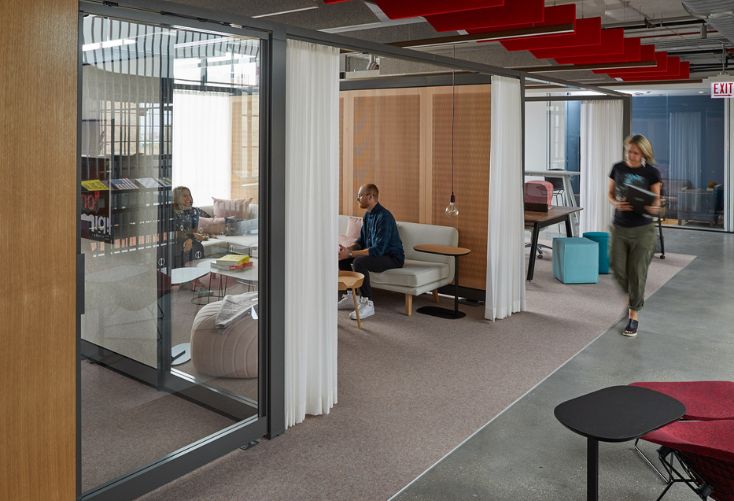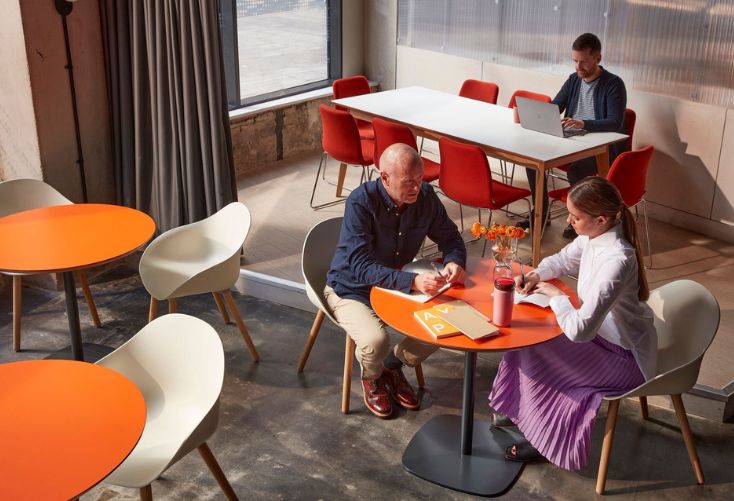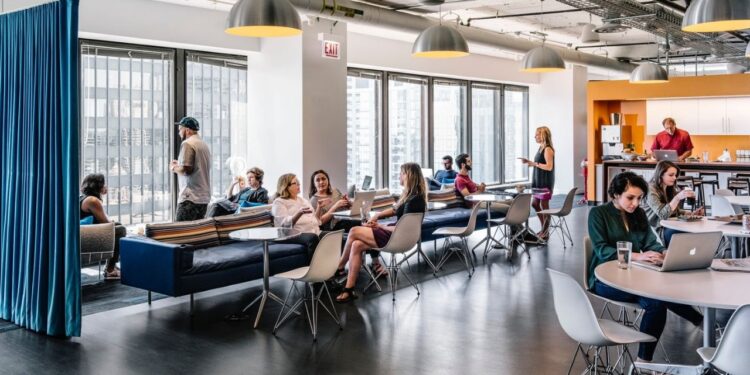- The workplace is undergoing a significant post-pandemic transformation, but how will we describe this transformation in the future?
- Whether office-first or remote-first, organizations are recognizing that if their workplace investment doesn’t serve the needs of its people, then it’s a waste of money.
- Ryan Anderson of MillerKnoll explores the transformation of the workplace and why the processes associated with planning and managing spaces need to be fundamentally redesign.
This article was written by Ryan Anderson and was originally published on Work Design Magazine.
Few would dispute that the workplace is in a time of significant post-pandemic transformation, but how will we describe this transformation in, say, twenty years?
While we might be tempted to say, “this is the rise of the hybrid era of workplace” we should remember that hybrid strategies are a response to other fundamental changes in work, not the root of them. Instead, we should understand that at the core the transformation underway is a fundamental re-evaluation of the purpose of the workplace, and if we had to speculate as to the clearest explanation of how we might look back on this era, it should be this: the workplace is becoming what the employees want it to be.
Call it the consumerization of workplace or the recognition that employees are actually customers of our office environments, organizations along the full spectrum of workplace strategy – from office-first to hybrid to remote-first – are recognizing that if their investment in corporate real estate doesn’t serve the needs of its employees then it’s a waste of money. This is a seismic shift in the conceptualization of the workplace. While this type of thinking wasn’t entirely absent from the pre-pandemic business world, it was the exception rather than the rule. For most organizations, the workplace was synonymous with the office, and the design of offices was based upon a clearly recognizable template that has its roots from over a century ago.

Let’s acknowledge that the early origins of the office were based on the needs of management (more likely called “bosses” back in those times), not the workforce. As offices began to develop adjacent to manufacturing facilities and storefronts in the mid-to-late 1800s, they were designed to bring the bosses into close proximity with their top employees and the clerks who kept the books and managed the logistics of the business. These clerks, it should be noted, typically wore heavily starched white collared shirts, from which we later derived the term “white collar work.” Over the hundred years that followed, variances occurred in how offices were designed but most still resembled rows of open desks within view of large private offices, driven by the needs of bosses to supervise work, commiserate with each other, and impress clients.
There was a brief reprisal of this approach in the 1950’s postwar Germany when two brothers with the surname Quickborner began promoting the concept of Bürolandschaft, or “office landscape”, as a more spacious, navigable space design to promote employee choice and movement, and the idea slowly began to spread. However, any hopes for choice and movement were put on hold for thirty years with the rise of the desktop computer, which tethered employees to a given location and forced office design to be based upon the location of computers, the need to route power and data cabling to them, and the ergonomic support of the employees who sat in front of them for most of their working lives. It’s not an exaggeration to say that from 1980 to 2010 it was IT networks rather than human networks that drove the design of office space.

However, when mobile technologies, WiFi and the cloud began to converge between 2010 and 2020, we entered into a transitional state that set the stage for the transition we’re currently experiencing. The work became distributed – it spread out – across floorplates, cities and the world, and office utilization rates declined significantly year over year. Some organizations, particularly those in Europe and Australia, embraced activity-based working (ABW) and other alternative workplace strategies, while most other organizations around the world simply densified their floor plans with smaller and more generic desks. In other words, the pre-pandemic workplace for all of its advances still heavily resembled ones from a century before. However, with the onset of the pandemic and years of sustained remote working, leaders finally began to question not just the design of their spaces, but the fundamental purposes of them.
For most organizations, their historic investment in corporate real estate was only second to their investment in people. In today’s economy these same organizations recognize that finding and keeping the right people is much more costly than it once was while the cost of real estate is less so. A softening of the economy may provide some relief to the rising costs associated with getting and keeping talent, but investments in corporate real estate will still be viewed with a new lens – it’s either an investment in accelerating the impact of their people or it’s a cost that should be reduced to make room for increases in compensation. There’s no point in simply paying for offices for the sake of keeping them. Either they work for the employees or they don’t.

So where does this leave us? Perhaps the most important takeaway is this: the processes associated with planning and managing spaces need to be fundamentally redesigned to capture the voice of the employees rather than the leaders. We need to move beyond typical program development processes and post-occupancy satisfaction surveys and find new ways to conceptualize the workplace as a product that is driven by the voice of its customers – the employees.
As I wrote in Work Design back in December of 2020, we can take inspiration from other spaces such as restaurants. Much like working from home, people are free to cook from home, but we still value – cherish, even – the experience of dining out, and many of us do so in some capacity several times per week. But for a restauranteur to be successful, they must take many factors into account. Who are their customers? What type of experiences do the customers seek? How can the space and the experience fit well into the local culture while connecting the customers to something beyond their locale? Ultimately, the experience in the space is a product, and the restauranteur must determine if it’s desirable and valuable or how it must shift as demand patterns change.

These are the same types of questions that must be applied to the office. With this new customer-centricity, we must consider the full breadth of user needs, recognize that our typical user isn’t actually typical at all, and that through a well-curated choice of work settings spaces can become more desirable, inclusive, and adaptable. In this way we’ll accelerate the transformation underway and see greater returns on real estate investments, transforming the office from a platform of management to an empowering employee resource. In other words, we can transform the spaces into what the employees want them to be.


 Dr. Gleb Tsipursky – The Office Whisperer
Dr. Gleb Tsipursky – The Office Whisperer Nirit Cohen – WorkFutures
Nirit Cohen – WorkFutures Angela Howard – Culture Expert
Angela Howard – Culture Expert Drew Jones – Design & Innovation
Drew Jones – Design & Innovation Jonathan Price – CRE & Flex Expert
Jonathan Price – CRE & Flex Expert













